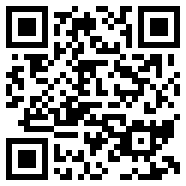[Español] Fuzzing es posiblemente el método más utilizado hoy en día para buscar vulnerabilidades y este libro nos demuestra cómo hacerlo a lo largo de sus nueve capítulos. Fuzzing for Software Security Testing and Quality Assurance (ISBN-13: 978-1596932142) está escrito por tres reputados expertos en seguridad que han innovado en este área como son Ari Takanen, Jared DeMott y Charlie Miller.
[English] Fuzzing is possibly the most widely used method today to look for vulnerabilities, and this book shows us how to do this through its nine chapters. Fuzzing for Software Security Testing and Quality Assurance (ISBN-13: 978-1596932142) is written by three reputed security experts that have innovated in this area such as Ari Takanen, Jared DeMott and Charlie Miller.
El libro comienza con una introducción a diferentes tipos de vulnerabilidades en aplicaciones para después profundizar en el fuzzing, explicando en qué consiste, uso de métricas, como desarrollar fuzzers efectivos y avanzados, monitorizar y analizar resultados y acaba con el estudio de ejemplos reales. El libro incluso menciona una de mis herramientas, gracias 😉
The book begins with an introduction to different types of vulnerabilities in applications for later dealing with fuzzing in depth, explaining what fuzzing is, use of metrics, how to develop effective and advanced fuzzers, monitor and analyse results and ends with the study of real-life examples. The book even mentions one of my tools, thanks 🙂
La obra está muy bien organizada y trata temas que mucha gente pasa por alto y que son de vital importancia como métricas o cómo se comparan los fuzzers entre sí. El libro también incluye código fuente a modo de ejemplo utilizando conocidos fuzzers. Una crítica negativa al libro son las constantes referencias a un producto comercial por parte de uno de los autores, que es también fundador de la empresa que vende el producto en cuestión.
The work is very well organized and covers aspects that many people ignore that are of vital importance such as metrics or how fuzzers compare between them. The book also includes source code examples using well-known fuzzers. A negative criticism of the book is the constant references to a commercial product by one of the authors, who is also founder of the company that sells the product in question.
Es por todo ello que esta obra es una magnífica referencia para adentrarnos en el apasionante mundo del fuzzing y cómo establecer una infraestructura de fuzzing efectiva que nos permita descubrir el próximo Oday que nos hará ricos y/o famosos.
It is because all these aspects the work is a wonderful reference to delve into the exciting world of fuzzing and how to set up an effective fuzzing infrastructure that will allow us to discover the next Oday that will make us rich and/or famous.
Puntuación (1 rosa, muy malo / 5 rosas, muy bueno): 5 Rosas (Lectura Obligatoria)
Score (1 rose, very bad / 5 roses, very good): 5 Roses (Mandatory Reading)
— Simon Roses Femerling



